Transporting a canoe on a truck involves proper planning, essential gear, and safety measures to ensure a successful outdoor adventure while securing your kayak effectively.
Understanding the Basics of Canoe Transport
When transporting a canoe, it’s crucial to understand the essential elements involved in boat transportation. First, know the weight and dimensions of your canoe to ensure compatibility with your vehicle. Selecting the right method for securing your canoe is vital, whether using a canoe rack or a truck bed. Familiarize yourself with your vehicle’s capabilities, including roof rack options if necessary. Always prioritize canoe safety by double-checking that all tie-down straps are secure. Ensure your canoe is loaded correctly to prevent shifting during transit. Planning your route in advance helps avoid obstacles, such as low bridges. Lastly, consider your camping gear and additional accessories that may affect your vehicle’s capacity when loading your canoe for an outdoor adventure.
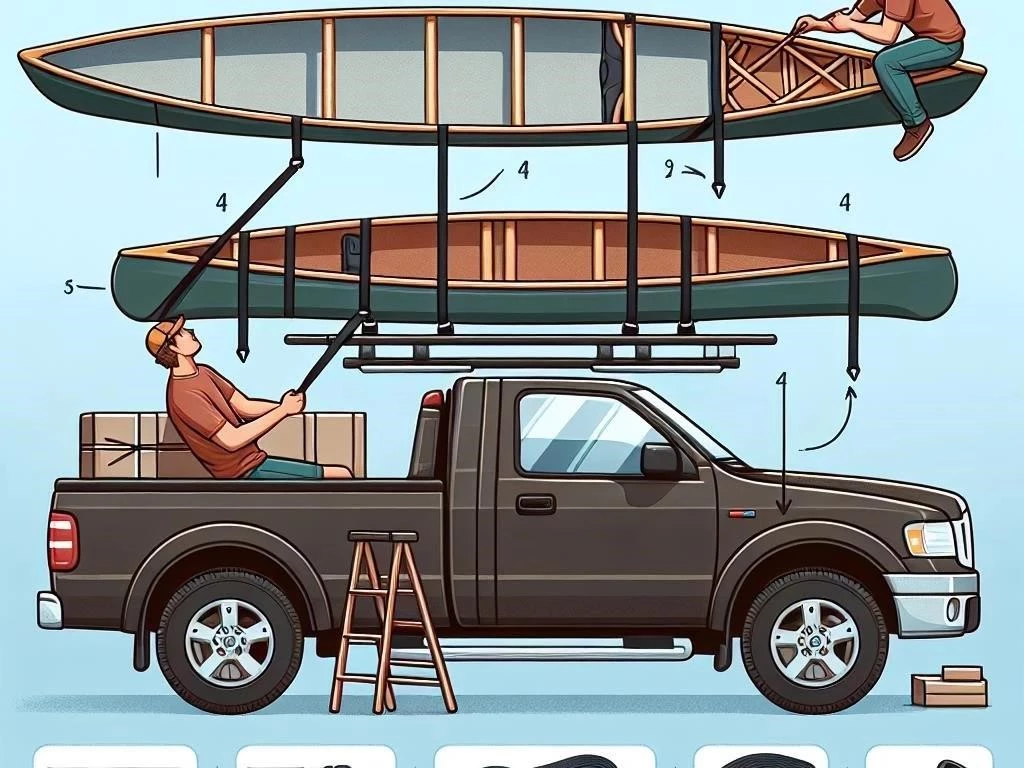
Choosing the Right Vehicle for Canoe Transport

Selecting the appropriate vehicle for canoe transport is essential for a successful outdoor adventure. Pickup trucks are often ideal due to their spacious truck beds, accommodating both standard and portable canoe sizes. Evaluate your truck’s payload capacity to ensure it can handle the weight of your canoe and any additional camping gear. If using a roof rack, ensure it’s compatible with your canoe’s dimensions, providing secure support. Consider vehicle accessories like tie-down straps to enhance stability during transport. For those without a truck, SUVs and vans can also be suitable if equipped with proper canoe racks. Always prioritize safety and accessibility when choosing your vehicle, ensuring a smooth and enjoyable experience while traveling with your canoe.
Essential Vehicle Accessories for Canoe Hauling
When preparing for canoe transport, having the right vehicle accessories is crucial for safe and effective hauling. First, invest in a sturdy canoe rack designed specifically for your truck, allowing for secure mounting. If using a roof rack, ensure it is compatible with your canoe type and dimensions. Tie-down straps are essential for securing the canoe, preventing movement during transit. Additionally, consider using foam blocks or padding to protect both your canoe and vehicle from scratches. A bow and stern tie-down system can further enhance stability, ensuring the canoe remains firmly in place. Lastly, having a quality trailer hitch can be beneficial for additional accessories like cargo carriers, providing extra space for your camping gear during outdoor adventures.

3.1. Canoe Racks
Canoe racks are essential accessories for transporting your canoe safely and efficiently. They come in various styles, including J-cradles, stackers, and foam blocks, allowing you to choose what best suits your needs. When selecting a canoe rack, consider your truck’s design and the type of canoe you own. A rack should securely hold the canoe, minimizing movement during transit. Installing a rack on the roof or in the truck bed can help maintain stability while driving. Ensure that the rack is easy to install and remove, allowing for quick setup when preparing for your outdoor adventure. Ultimately, investing in a quality canoe rack enhances your canoe transport experience, ensuring safety and convenience throughout your journey.

3.2. Roof Racks
Roof racks are a popular choice for transporting canoes, providing an efficient way to utilize space on your truck. They allow for secure mounting of your canoe, keeping it safely above the vehicle and freeing up cargo space. When selecting a roof rack, ensure it is compatible with both your truck model and canoe dimensions. Opt for adjustable racks, which can accommodate various canoe sizes. Proper installation is crucial; follow manufacturer guidelines to guarantee safety and stability during transport. Additionally, use tie-down straps to secure the canoe firmly to the roof rack, preventing any movement while driving. Roof racks enhance your outdoor adventure experience, making it easier to travel with your canoe and enjoy water sports wherever you go.
3.3. Truck Bed Options
Transporting a canoe in the truck bed is a practical option for many canoe enthusiasts. First, ensure your truck bed is spacious enough to accommodate the length and width of your canoe. Using bed extenders can provide additional support and prevent the canoe from hanging over the tailgate, ensuring safety during transit. Consider using foam pads or blankets to protect both the canoe and the truck from scratches. Secure the canoe using high-quality tie-down straps, anchoring them to the truck bed’s tie-down points; This method provides stable support while preventing shifting during your journey. Always double-check the setup before hitting the road to ensure a safe and enjoyable outdoor adventure with your canoe in tow.
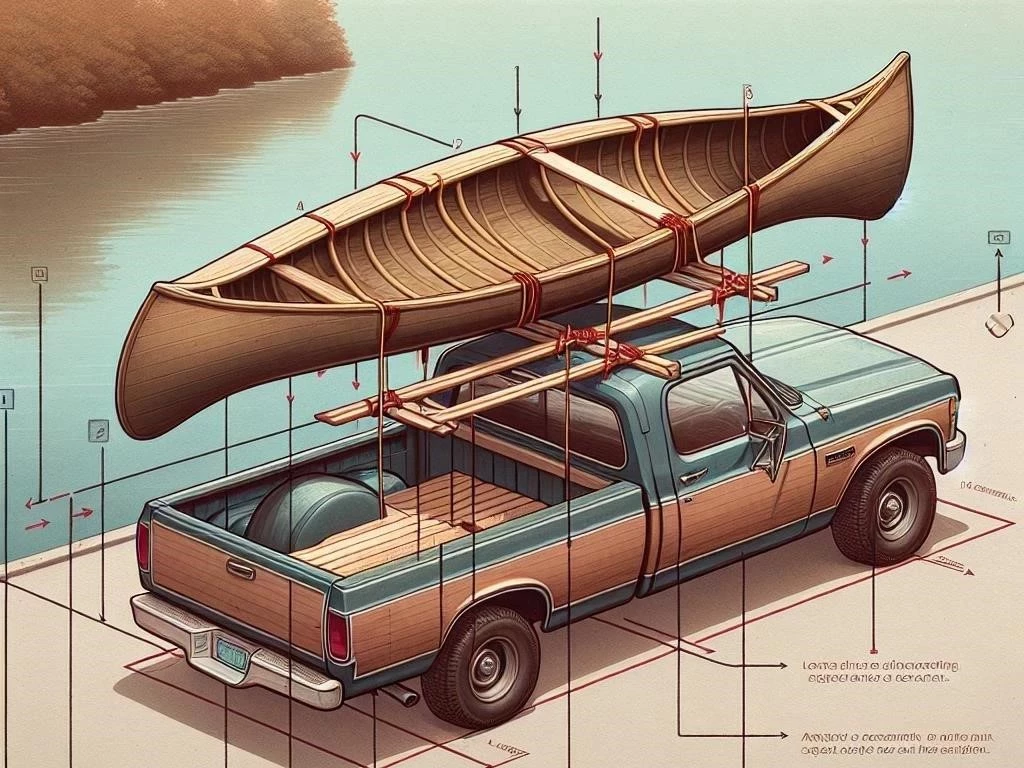
Loading Your Canoe onto the Truck
Properly loading your canoe onto the truck is crucial for ensuring safety and stability during transport. Start by positioning your truck on level ground to facilitate easy loading. If possible, have a friend assist you; teamwork can make the process smoother. Lift the canoe and align it with the truck bed or roof rack, depending on your chosen method. Use foam pads or other protective materials to prevent scratches. Once in place, secure the canoe using tie-down straps, ensuring it is firmly attached to the truck. Check that the canoe is centered and balanced to prevent swaying while driving. Finally, double-check all connections and stability before embarking on your outdoor adventure with confidence and peace of mind.

4.1. Best Practices for Loading Canoe
Loading your canoe onto the truck requires attention to detail and safety. Begin by gathering all necessary equipment, including tie-down straps and padding. Position the canoe near the truck in a way that allows easy access. If using a roof rack, utilize a loading assist tool or a partner to help lift the canoe. Always lift from the center to maintain balance. When placing the canoe, ensure it rests securely on the rack or truck bed without any overhang. After positioning, use tie-down straps to secure the canoe tightly, preventing movement during transit. Regularly check the load for stability before driving. Following these best practices will enhance safety and ensure a smooth outdoor adventure with your canoe.
4.2. Using Tie-Down Straps Effectively
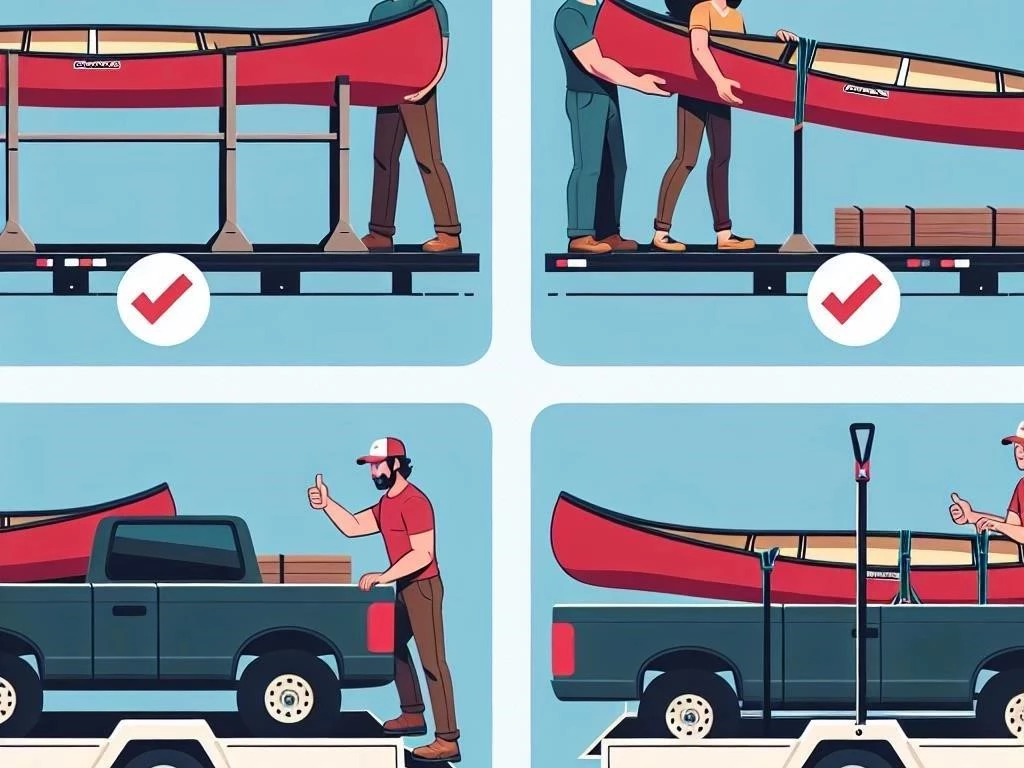
Using tie-down straps effectively is essential for securely transporting your canoe on a truck. Start by selecting high-quality, durable straps designed for heavy loads. Position the canoe properly in the truck bed or on the roof rack before securing it. Loop the straps around the canoe and attach them to the truck’s tie-down points or rack system. Ensure that the straps are tight but not overly compressed, as this can damage the canoe. Check that the canoe is stable and does not shift when pushed gently. Use a bow and stern tie-down method for added security, anchoring the canoe at both ends. Regularly inspect the straps during your journey to ensure they remain secure and intact.
Securing Your Canoe for Safe Transportation

Securing your canoe properly is crucial for safe transportation, preventing accidents and damage during your journey. Begin by ensuring that the canoe is positioned correctly in the truck bed or on the roof rack. Use high-quality tie-down straps to secure the canoe firmly, attaching them to the vehicle’s tie-down points or rack system. Make sure the straps are tight enough to prevent movement but not so tight that they cause damage. Implement a bow and stern tie-down method to anchor the canoe securely at both ends, enhancing stability. Regularly check the straps during travel, especially on longer trips. Following these steps will help you transport your canoe safely while enjoying your outdoor adventures with peace of mind.
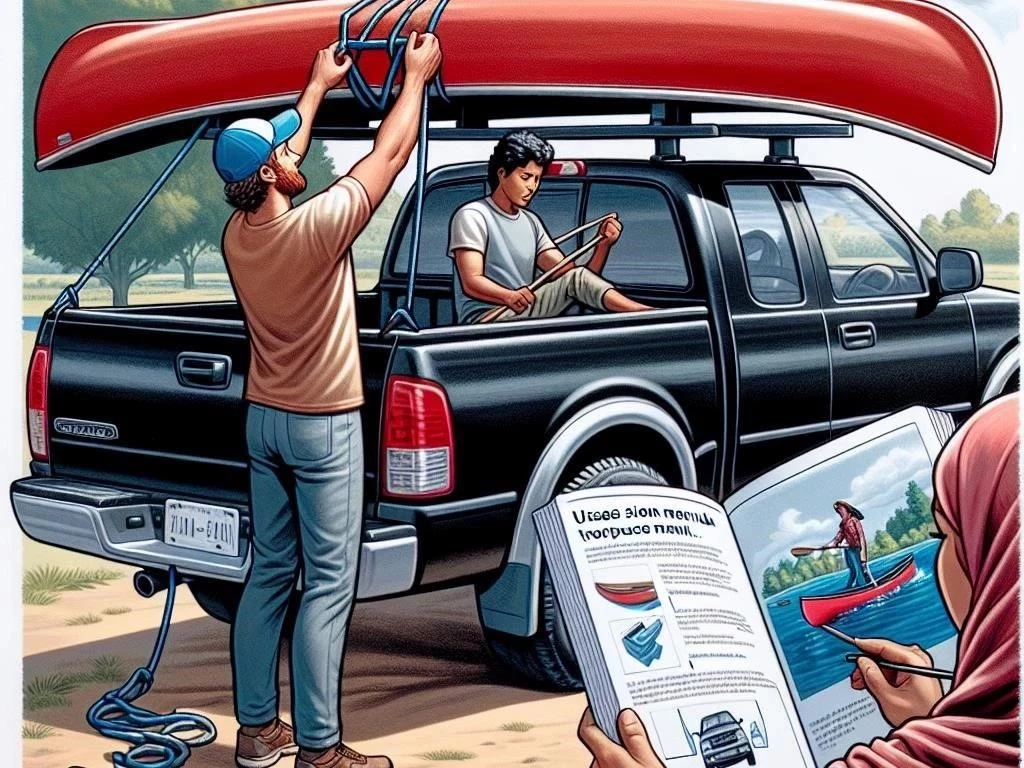
5.1. Importance of Canoe Safety
Canoe safety is paramount when transporting your canoe, as improper handling can lead to accidents or damage. Ensuring your canoe is securely fastened can prevent it from shifting or falling during transit, potentially causing harm to other road users or damaging your vehicle. Additionally, understanding safety protocols helps you prepare for emergency situations while on the road. Using high-quality equipment, such as tie-down straps and racks, contributes to effective canoe transport. It’s essential to regularly inspect the connections and stability of your load, especially on long journeys. Prioritizing safety not only protects your canoe investment but also enhances your overall outdoor adventure experience, allowing you to focus on enjoying water sports with peace of mind.
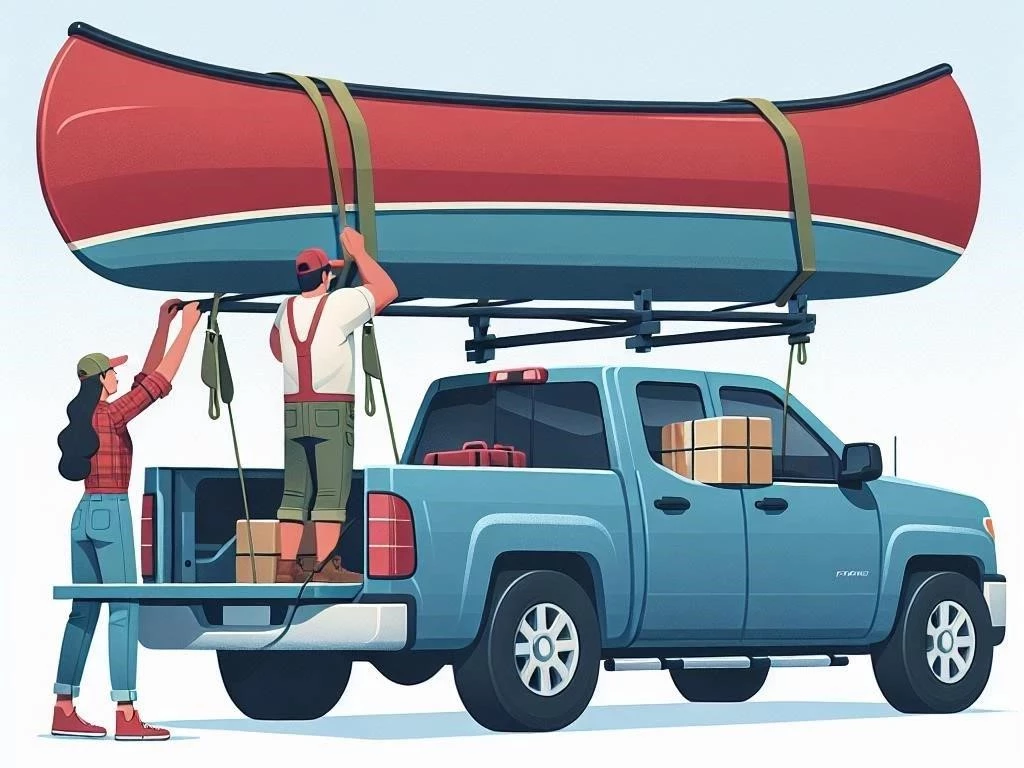
5.2. Tips for Securing Canoe with Tie-Downs
Securing your canoe with tie-downs is essential for safe transport. Start by selecting heavy-duty, durable tie-down straps designed for outdoor use. Before attaching, ensure the canoe is evenly positioned in the truck bed or on the roof rack. Loop the straps around the canoe and anchor them to the truck’s tie-down points or rack system. To achieve optimal security, pull the straps tight but avoid over-compressing the canoe. Utilize a bow and stern tie-down method for added stability, anchoring both ends of the canoe. Regularly check your tie-downs during transit, especially on longer trips, to guarantee they remain secure. Following these tips will help prevent shifting and enhance safety during your outdoor adventures.
Canoe Transport Tips for Outdoor Adventure
When preparing for your outdoor adventure, effective canoe transport is essential for a smooth experience. Start by planning your route, considering factors like road conditions and potential obstacles. Make sure to check the weather forecast as this can impact both driving and your canoe outing. Load your canoe securely and ensure all tie-downs are tight, preventing movement during transit. Consider bringing along essential camping gear, such as paddles, life jackets, and emergency supplies; It’s wise to have a checklist to ensure you don’t forget important items. Additionally, familiarize yourself with local regulations regarding canoe transport and water sports. Following these canoe transport tips will set the stage for a successful adventure on the water.
6.1. Planning Your Trip with Canoe in Mind
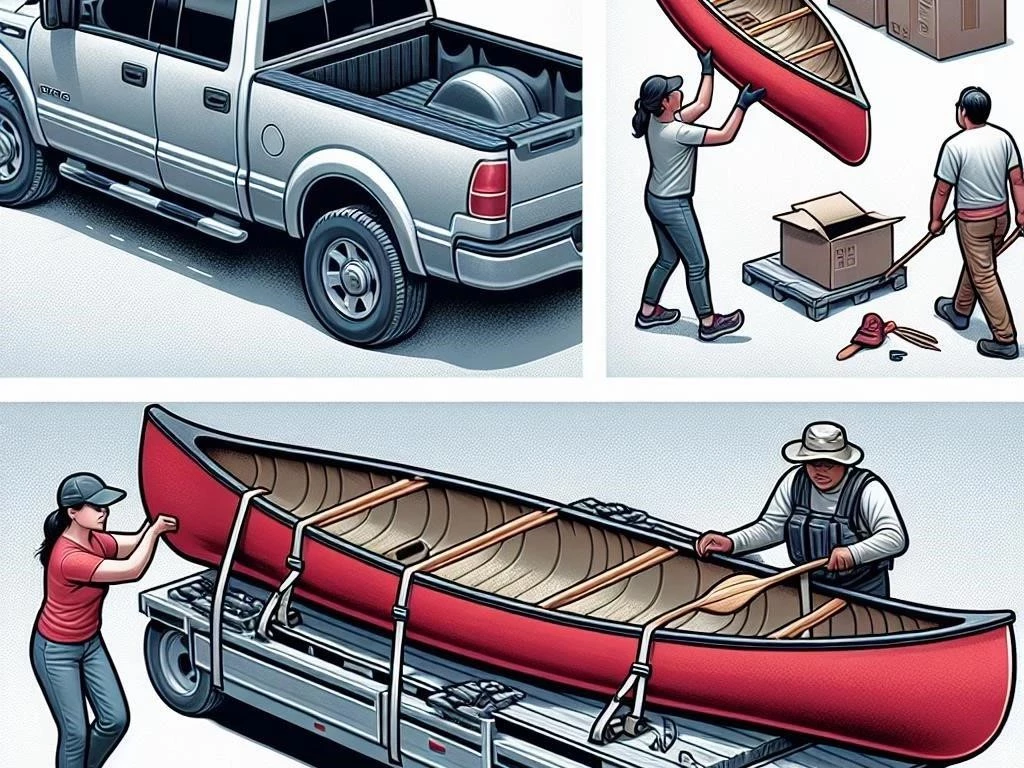
Planning your trip with your canoe in mind is essential for a successful outdoor adventure. Start by selecting a destination that accommodates canoeing and offers suitable water conditions. Research local regulations regarding canoe transport and access points to ensure compliance. Consider the distance and type of terrain you’ll encounter while driving, factoring in road conditions and potential obstacles. Create a checklist of necessary gear, including life jackets, paddles, and safety equipment, to ensure nothing is forgotten. Additionally, plan for rest stops along the way, allowing time for breaks and ensuring that your canoe remains secure. By thoroughly planning your trip, you can enhance the overall experience and make the most of your outdoor adventure.

6.2. Canoe Transport and Camping Gear Compatibility
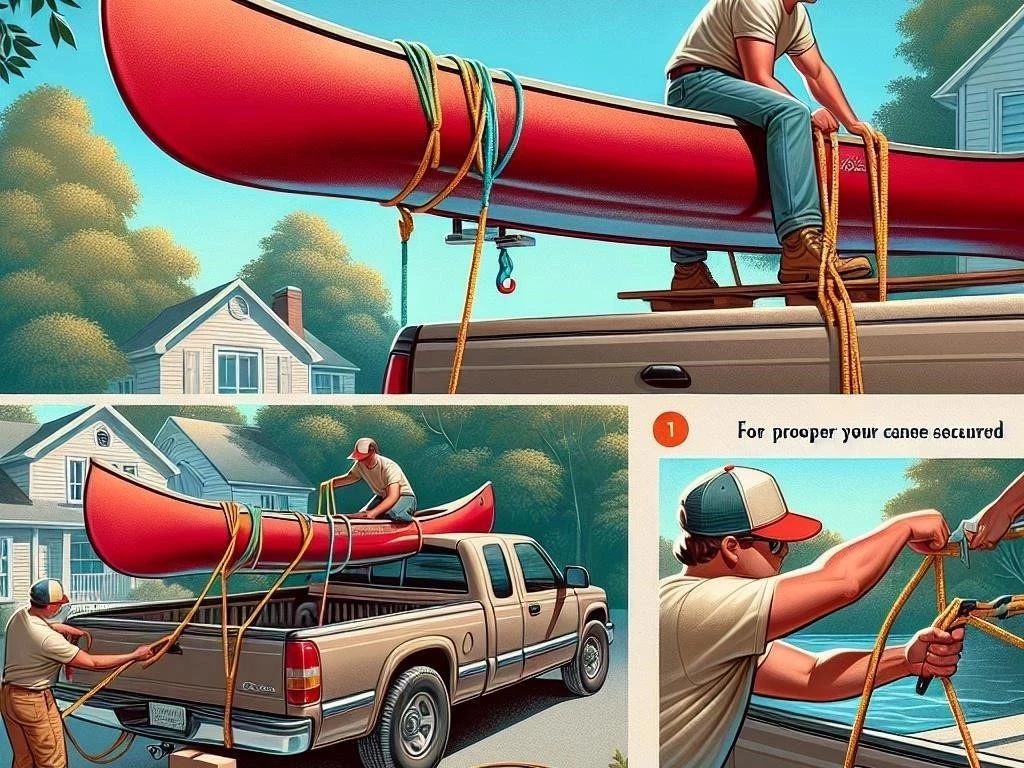
Ensuring compatibility between canoe transport and camping gear is crucial for a successful outdoor adventure; When loading your truck, assess the available space and organize your gear efficiently. Prioritize items based on accessibility; keep frequently used camping gear, like cooking equipment and sleeping bags, easily reachable. Consider using waterproof bags for items susceptible to moisture, protecting them during transport. Additionally, ensure that your canoe is securely fastened to avoid movement that could disrupt other gear. If your canoe occupies significant truck space, consider a rooftop cargo carrier for added storage. By planning for gear compatibility, you enhance the overall organization and efficiency of your outdoor adventure, making it easier to focus on enjoying water sports and nature.
Alternative Methods of Canoe and Kayak Transport
Exploring alternative methods for canoe and kayak transport can enhance your outdoor adventure experience. Apart from traditional truck transportation, consider using a trailer specifically designed for hauling watercraft. This option provides additional room for gear and allows for safe, stable transport. If you don’t own a truck, roof racks on SUVs or vans can also be effective, provided they are properly installed and secured. Another innovative option is using portable canoes or inflatable kayaks, which are easier to carry and store. Additionally, some outdoor enthusiasts opt for public transport or rideshare services designed for transporting recreational gear. Evaluating these alternatives can lead to more convenient and flexible transport solutions for your canoeing journeys.
7.1. Portable Canoe Options
Portable canoe options provide versatility and ease when it comes to transport. These canoes are typically lightweight and designed for easy assembly and disassembly, making them ideal for outdoor enthusiasts with limited space. Inflatable canoes are a popular choice, as they can be deflated and packed away in a compact bag, fitting conveniently in your truck. Another option is foldable canoes, which can be easily stored and transported without sacrificing performance. Both types offer excellent stability and maneuverability on water. When selecting a portable canoe, consider weight capacity, materials, and ease of setup. These options allow you to enjoy your outdoor adventures without the bulk and hassle of traditional canoes, enhancing your overall experience.
7.2. Comparing Canoe and Kayak Transport Techniques
When comparing canoe and kayak transport techniques, consider the differences in size, shape, and weight. Canoes are generally broader and longer, often requiring specialized racks or tie-downs for secure transport. Kayaks, being narrower, can sometimes be transported more easily on standard roof racks. For both types, using tie-down straps is essential, but the placement may differ due to their shapes. Canoes may need additional support at the bow and stern, while kayaks benefit from being secured along their hull. Additionally, weight distribution is crucial; ensuring a balanced load prevents swaying during transit. Assessing these differences helps optimize your transport method, enhancing safety and convenience while enjoying your outdoor adventures on the water.
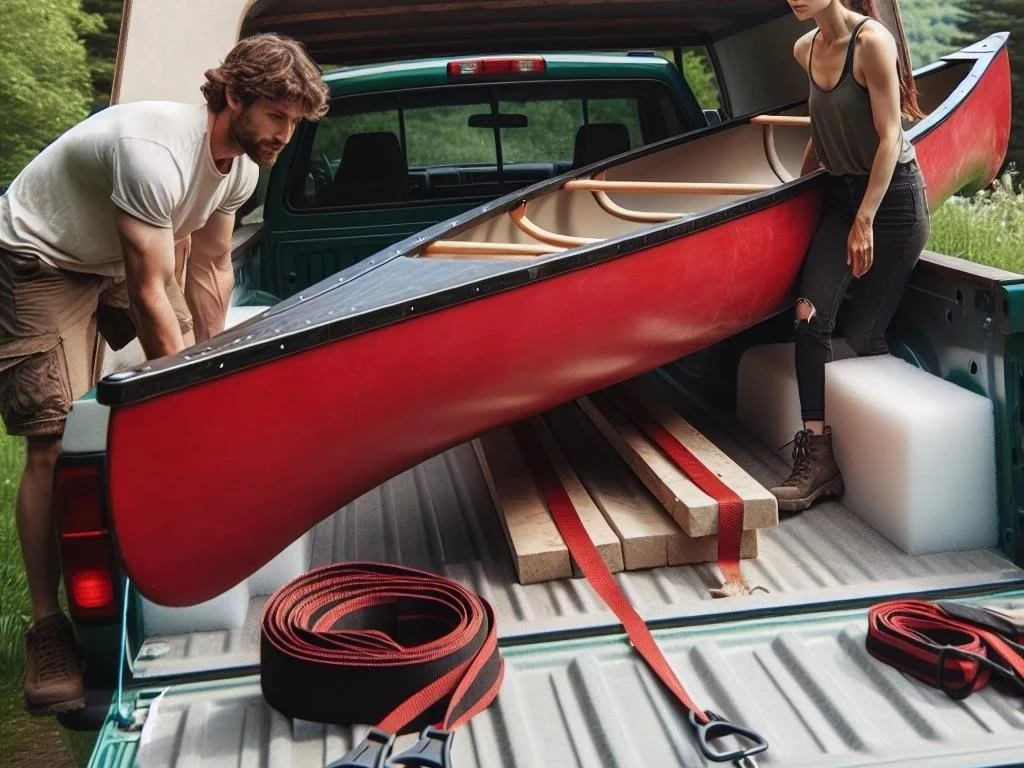
Canoe Storage Solutions for Travel
Effective canoe storage solutions for travel are essential to protect your canoe and ensure a hassle-free experience. Begin by using a dedicated storage bag or cover designed for your canoe’s size, which protects it from dirt and damage during transport. If using a truck bed, consider foam blocks or cradles to prevent scratches and secure the canoe in place. For roof rack transport, ensure that the canoe is well-padded and secured with tie-down straps. To maximize space, organize other camping gear around the canoe, ensuring nothing shifts during travel. Additionally, storing your canoe upside down can prevent water accumulation and prolong its lifespan. Implementing these storage solutions will safeguard your canoe throughout your outdoor adventures.
8.1. Best Practices for Storing Canoe on Truck
Storing your canoe on a truck requires careful attention to ensure its safety and integrity during transport. First, use a truck bed with sufficient space to accommodate the canoe’s length and width. If utilizing a roof rack, ensure it is compatible with your canoe type and securely attached. Use foam pads or blankets to protect the canoe from scratches while in transit. Secure the canoe using high-quality tie-down straps, anchoring them to the truck bed’s tie-down points or the roof rack. Always check the stability of your load before driving. For added protection, cover the canoe with a tarp or protective cover to shield it from dirt and debris. Following these best practices enhances safety and longevity.
8.2. Preventing Damage During Transportation
Preventing damage to your canoe during transportation is crucial for maintaining its condition. Begin by ensuring the canoe is clean and dry before loading, as dirt and moisture can cause damage over time. Use protective padding, such as foam blocks or blankets, to cushion the canoe against rough surfaces in the truck bed or roof rack. Secure the canoe with high-quality tie-down straps, avoiding over-tightening, which can cause warping or cracking. Additionally, place the canoe upside down if possible, minimizing the risk of water accumulation. Regularly check the straps and canoe stability during travel, especially on longer trips. By taking these precautions, you can ensure your canoe remains in excellent condition throughout your outdoor adventures.
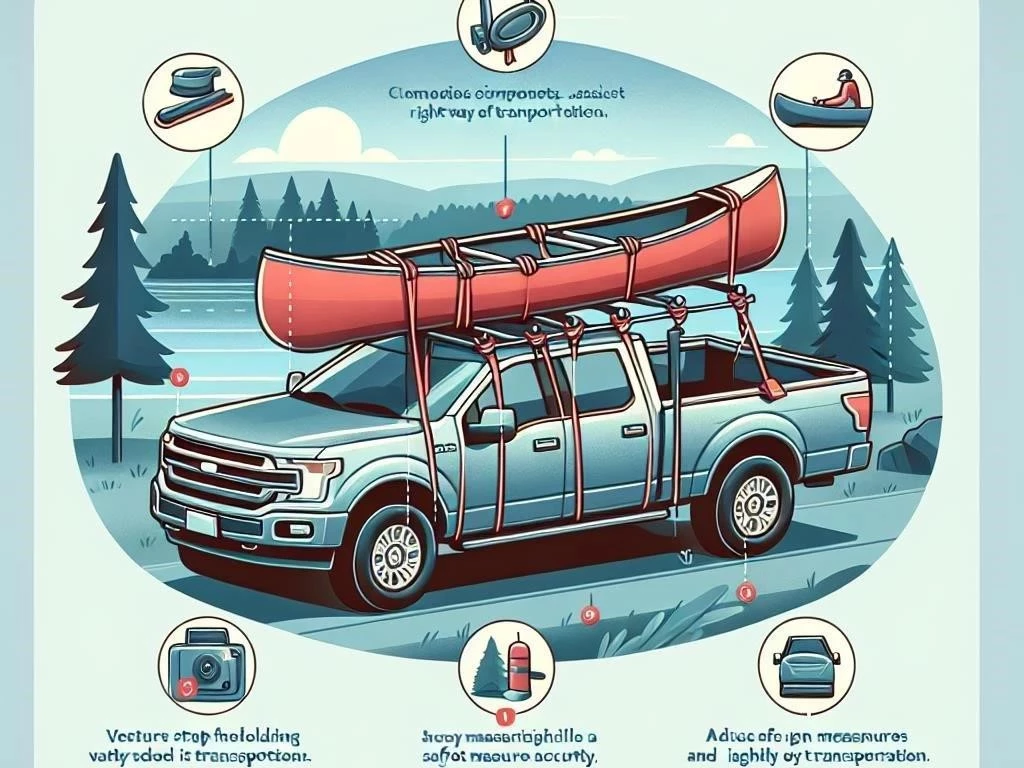
Final Thoughts on Canoe and Boat Transportation
Successfully transporting your canoe or boat requires careful planning and the right equipment to ensure safety and convenience. Understanding the specific needs of your canoe, including appropriate loading techniques and securing methods, is essential. Choose vehicle accessories that complement your transport method, whether using a truck bed or roof rack. Always prioritize safety by regularly checking your load and ensuring all gear is secure. Additionally, consider the journey itself, factoring in road conditions and weather. By following best practices and being prepared, you can enhance your outdoor adventures while minimizing risks. Ultimately, effective canoe and boat transportation ensures that you can focus on enjoying the water sports and experiences that await you on your journey;